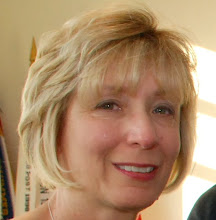The formal gardens that you see in the photo above (which I shot from a terraced patio on the south side of the mansion) are all part of the 55-acre Cheekwood Botanical Garden and Art Museum. The site includes ponds, pools, fountains, statues and a number of beautiful and varied gardens.
There are gardens on the entire 55-acre site, and visitors can see boxwoods, crepe myrtles, magnolias, daffodils, dogwoods, ferns, redbuds, Japanese maples, and hundreds of other plants in the many gardens sweeping the grounds. Robertson Ellis Color Garden is filled with colorful flowers. There is an avenue of crepe myrtles leading into the RECG. A Perennial Garden is a full-sun garden displaying dozens of perennials on limestone walls. The Martin Boxwood Garden includes terraced gardens planted with boxwoods. The Howe Wildflower Garden is filled with woodland wildflowers. The Carrell Dogwood Garden is planted with the many varieties of dogwood trees. The Herb Study Garden is just that. . . .a garden where one may touch and smell the many plants grown there. In addition, there is a Japanese Garden, the Burr Terrace Garden, the Turner Seasons Garden, and a sculpture garden.
********
Allow me to clear up a little confusion about the Cheek-Neal Coffee Company and Postum Foods. Joel Cheek, one of the founders of Cheek-Neal, developed a blend of coffee, and Nashville's Maxwell House Hotel served only that blend in the hotel and restaurants.
Legend has it that President Teddy Roosevelt had the coffee at the Maxwell House Hotel and proclaimed it "Good to the last drop!" The truth is that the phrase was the brainstorm of one of the company's ad men, and it was a great line as the company uses it to this day.
Postum Foods bought the Cheek-Neal Coffee Company in 1928, and the blend eventually became known as Maxwell House Coffee.
There are gardens on the entire 55-acre site, and visitors can see boxwoods, crepe myrtles, magnolias, daffodils, dogwoods, ferns, redbuds, Japanese maples, and hundreds of other plants in the many gardens sweeping the grounds. Robertson Ellis Color Garden is filled with colorful flowers. There is an avenue of crepe myrtles leading into the RECG. A Perennial Garden is a full-sun garden displaying dozens of perennials on limestone walls. The Martin Boxwood Garden includes terraced gardens planted with boxwoods. The Howe Wildflower Garden is filled with woodland wildflowers. The Carrell Dogwood Garden is planted with the many varieties of dogwood trees. The Herb Study Garden is just that. . . .a garden where one may touch and smell the many plants grown there. In addition, there is a Japanese Garden, the Burr Terrace Garden, the Turner Seasons Garden, and a sculpture garden.
********
Allow me to clear up a little confusion about the Cheek-Neal Coffee Company and Postum Foods. Joel Cheek, one of the founders of Cheek-Neal, developed a blend of coffee, and Nashville's Maxwell House Hotel served only that blend in the hotel and restaurants.
Legend has it that President Teddy Roosevelt had the coffee at the Maxwell House Hotel and proclaimed it "Good to the last drop!" The truth is that the phrase was the brainstorm of one of the company's ad men, and it was a great line as the company uses it to this day.
Postum Foods bought the Cheek-Neal Coffee Company in 1928, and the blend eventually became known as Maxwell House Coffee.








6 comments:
Love visiting gardens... did quite a lot of that in France last August.
Oh so beautiful and serene.
Love coffee! In fact, am trying to reduce my caffeine intake. :-(
The garden looks very inviting. DO they allow people to picnic on the grounds?
A wonderful place to take a walk.
Nice photo and post about the Cheekwood Gardens, Chris. I imagine one would need days and days to visit it all.
And I agree with you about how amazing it is to have something happen that catches your eye. I've found that I also thoroughly enjoy this blogging as an opportunity to share photos I somehow manage to take of those moments.
Very beautiful gardens! Great photo.
Thanks for visiting my NorthBayPhoto blog. To answer your question about the trees in Sunday's post - they are chokecherry trees.
Post a Comment